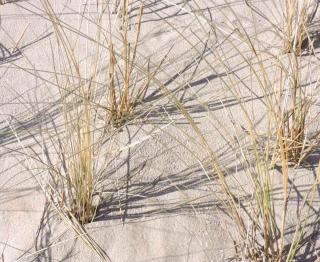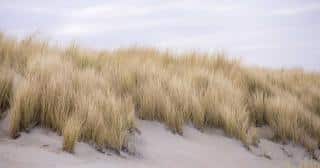

Key Marram grass facts
Botanical name – Ammophila arenaria
Common name – marram grass
Family – Poaceae
Type – grass
Bearing – upright
Height – 1&1/2 to 5 feet (50 cm to 1.5 m)
Planting density – 8 to 10 plants per sq. yard (m²)
Exposure – full sun
Soil – sandy
Flowering – from May to August
Marram beach grass is a typical seaside grass. It’s often topping sand dunes where the grass helps lock the dunes in place with their roots. This capacity to send roots far and wide in the wild is what makes marram grass such a good choice in gardens with poor soil that drains very well.

Marram grass is very effective to stabilize dunes thanks to its deep root system that spreads fast. In a garden, this might turn against you: it makes the plant invasive. To make sure this doesn’t happen, feel free to set up some kind of rhizome barrier when planting (a plastic basin or barrel with a hole at the bottom will do the trick). This will make controlling the plant’s spread easier.
It won’t take you much time to care for marram grass. Indeed, all you’ve got to do is cut the clump back at the start of spring so that new leaves are sent out.

Marram grass is a very resistant grass. It is not vulnerable to any disease, nor are any pests known to harm it.

It will also grow very well in flower beds, together with other grasses such as Miscanthus, Pennisetum, Stipa tenuifolia, Imperata cylindrica and also blue fescue, for which the blue-gray blades of grass pair well with the golden green of marram grass.
Perennials are also great together with this plant. They’ll add in a range of shapes and colors that will contrast with this grass’s wind-swept clumps. For instance, several options to chose from are Polygonum, Aster, hemerocallis, asphodel, iris, etc.